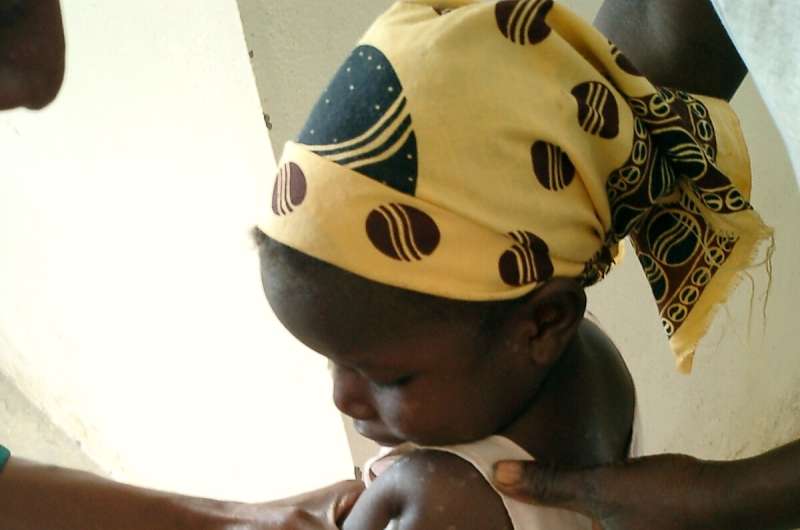Researchers find protein marker for the effectiveness of malaria antibodies

The quantity and quality of antibodies that recognize the end region of the malaria parasite's CSP protein is a good marker of protection by the RTS,S/AS01E vaccine, according to a study led by the Barcelona Institute for Global Health (ISGlobal) and institutional collaborators. The study, published in Nature Communications, provides valuable information for guiding the design of more effective vaccines.
Most vaccines contain inactivated pathogens or pathogen fragments against which the body produces protective antibodies—ideally, complete and long-lasting protection. This is not the case for RTS,S, which has the merit of being the first vaccine approved for large-scale pilot studies in Africa, but that protects only partially and for a limited amount of time. In recent years, ISGlobal researcher Carlota Dobaño and her group have tried to understand why, and to identify markers related to vaccine protection.
The RTS,S vaccine contains a fragment of the Plasmodium falciparum CSP protein, that goes from the central part, rich in amino acid repeats (NANP region) to the end (called the C-terminal end). In this study, Dobaño and her team focused on measuring not only the quantity of antibodies against the NANP and C-terminal regions, but also their avidity (i.e. the strength with which they bind to their ligand). To do so, they analysed samples from over 1,000 vaccinated and unvaccinated infants between six and 12 weeks of age and children five to 17 months old during the RTS,S phase 3 clinical trial in an area with low malaria transmission (Bagomoyo in Tanzania) and two areas with high malaria transmission (Nanoro in Burkina Faso and Kintampo in Ghana).
The results show for the first time that vaccination not only induces a strong increase in the amount of antibodies against both CSP regions, but also in their avidity. This increase is stronger in children than in infants, which could explain why the former are better protected by the vaccine. "We see that, in terms of protection, the avidity of C-terminal antibodies is more important than the quantity, while for NANP antibodies quantity is more important than quality," explains Dobaño. The results also indicate that when a child has already been exposed to malaria (and therefore has anti-CSP antibodies), the protective effect of the vaccine is lower. "This suggests that the vaccine will better protect children who have been less exposed to the parasite, for example those living in low-transmission areas," adds Dobaño.
The research team stresses the need to understand the mechanisms underlying the partial protection conferred by RTS,S in order to guide the design of new and better vaccines.
More information: Carlota Dobaño et al. Concentration and avidity of antibodies to different circumsporozoite epitopes correlate with RTS,S/AS01E malaria vaccine efficacy, Nature Communications (2019). DOI: 10.1038/s41467-019-10195-z


















